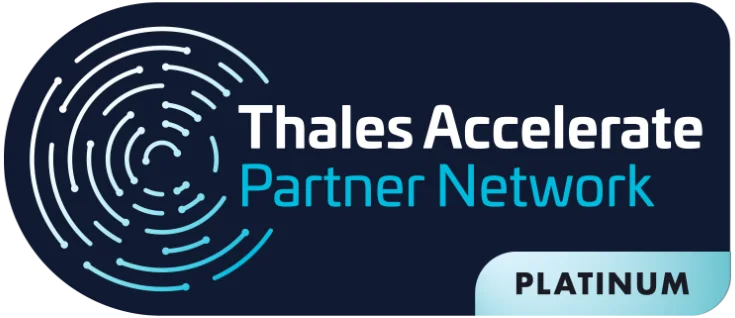With Health 5.0, we are facing a paradigm shift in digital technologies, from traditional health to smart health, which is expected to revolutionize the sector globally.
Smart health incorporates digital technologies to navigate medical information effortlessly, linking individuals, resources and organizations, and then efficiently reacting to the demands of the healthcare environment in an efficient manner.
In practice, smart health connects different stakeholders in the healthcare system, such as patients, professionals, organizations and regulators.
This is achieved with emerging technologies including artificial intelligence (AI), internet of things (IoT), cloud computing, blockchain, 5G connectivity and internet of medical things (IoMT), among other technological innovations that continue to evolve.
These technologies play an important role in the development of the innovative Health 5.0 concept.
Health 5.0 represents a significant boost in innovation
Similar to the automobile industry, the healthcare system has gone through generations, from health 1.0 to smart health, with the revolution in various support sectors.
For example, from 1970 to 1990, many medical systems used paper-based solutions due to the lack of digital technologies.
Healthcare support industries have embraced industry 4.0 and are now moving to industry 5.0. This revolution continues to redefine how modern, digitally high-tech companies improve business operations and increase efficiency across the value chain.
Just like manufacturing, healthcare service delivery is at the beginning of a paradigm shift to reach the new era of health 5.0.
This is a complex era in many respects, including intelligent disease control and detection, virtual care, intelligent monitoring, decision-making and medical science.
The transition from health 4.0 to health 5.0
The gain generated by the boost in digital and medical technologies has led to the development of advanced medical imaging, tracking and healthcare 4.0 systems.
Countries such as the United States, Germany and the United Kingdom have transformed their healthcare systems into a value-based system to improve patient-centered healthcare services through smart, connected care and personalized medicine.
Health 4.0 incorporates the principles and applications of industry 4.0 in healthcare, enabling real-time personalization of care for patients and professionals.
Thus, Health 4.0 supports resilient performance in health systems, which refers to their adaptive capacity to deal with complexity.
Innovative digital technologies adopted in the area of health 4.0 promote real-time customization of patient care and communication between actors in the value chain and the dissemination of health-related information.
The collection of large volumes of data on processes, patients, equipment and materials, processing and transformation of medical data into information, the digitization and automation of health processes, are examples of the advances generated by Health 4.0.
In this context, the process of health service delivery becomes a complex one. system equipped with technologies such as IoTThis will include the use of radio frequency identification, smart wearable medical devices, smart sensors and medical robots, integrated with cloud computing, big data, business intelligence (BI), AI and technical decision support to achieve smart and interconnected healthcare delivery.
However, the lack of recognition, coupled with the shortage of personalized, intelligent and comprehensive medical applications, requiring greater integration of smart sensors, AI and big data has taken it to the next level, making Health 5.0 have a greater focus on customer experience.
Technologies that are part of health 5.0
Emerging digital technologies used in health 5.0 include nanotechnology, 5G connectivity, drone technology, blockchain, robotics, big data, IoT, AI and cloud computing.
Health 5.0 will benefit from nanotechnology applications
Nanotechnology presents unprecedented opportunities to transform health services. Basically, nanotechnology plays a crucial role in therapeutic medicine, rapid diagnostics, surveillance and monitoring, and the development of new forms of personal protective equipment and vaccines.
Nanotechnology involves the manipulation, fabrication, material, modes and use of nanodevices in various applications.
IoT has been widely used in healthcare to connect medical devices and share data over the internet.
There are several emerging variations of sensor-based IoT in healthcare, each with its own peculiarities.
For example, IoT facilitates the introduction of the internet of health things, internet of wearable things, IoMT, among other variations.
These IoT variations provide networked healthcare, which supports the integration of smart medical devices and comprehensive sharing of health data remotely.
For example, smart devices enable remote monitoring in medical services and change the concept of traditional healthcare to smart healthcare.
Thus, through variations of IoT, patient data, sensed by biosensors and smart wearable devices, is remotely accessed, processed and analyzed by medical professionals to improve the delivery of healthcare services.
The inclusion of automation, along with AI, is expected to revolutionize service delivery in Health 5.0
Embedded AI devices based on highly integrated sensors, such as smart wearable devices, help monitor, collect and diagnose diseases from symptoms extracted from sensory data.
Intelligent systems recognize the environment through sensors and take reasonable actions. AI in health 5.0 includes several concepts such as disease detection and diagnosis, development of smart medicines, effective remote monitoring of patients, effective use of robotic surgical systems and the development of smart sensor-based AI devices.
5G technology provides high data throughput and bandwidth
Digital automation of emerging technologies such as robots, AI, smart devices, nanotechnology and cloud computing requires high and continuous data rates to collect, store, reformat and track health data to provide faster and more consistent access.
In this way, 5G technology has become a prime and essential technology for health 5.0 as it provides a high data rate to the user and huge network signal coverage and can handle 1000 times more traffic on the transmission channel.
The growing amount of health data generated from digital technologies is adding value to scientific findings in Health 5.0.
Digital health technologies such as telemedicine, electronic medical records, and other digital health platforms have significantly improved the efficiency and costs of hospitals, along with reducing medical errors and, most importantly, sharing patient data remotely.
In Health 5.0, the future interconnectivity of smart sensors, smart devices and other digital technologies will eventually increase the amount of health data, which results in big data.
This data will eventually be used for disease prevention, detection and monitoring, as well as to provide personalized care. Thus, big data for health 5.0 positions patients and healthcare professionals on the brink of great prospects and is expected to impact medical systems in unprecedented ways.
Emerging digital technologies continue to evolve, presenting unprecedented opportunities for global health systems.
Health 5.0 is at the beginning of a paradigm shift to reach the new era of intelligent disease control and detection, virtual care, smart health management and monitoring, decision making and precision medicine.
This revolution continues to redefine how high-tech digital companies improve healthcare operations and increase efficiency across multiple medical systems to deliver patient-centric healthcare services through smart, connected care and personalized medicine.
CipherTrust for Security and Data Protection in Healthcare 5.0
According to IDC, more than 175 zetabytes of data will be created by 2025, and today more than half of all corporate data is stored in the cloud.
To handle the complexity of where data is stored, CipherTrust Data Security Platform provides strong capabilities to protect and control access to sensitive data in databases, files, and containers. Specific technologies include:
CipherTrust Transparent Encryption
Encrypts data in on-premises, cloud, database, file, and Big Data environments with comprehensive access controls and detailed data access audit logging that can prevent the most malicious attacks.
CipherTrust Database Protection
It provides transparent column-level encryption of structured and confidential data that resides in databases such as credit card, social security numbers, national identification numbers, passwords, and e-mail addresses.
CipherTrust Application Data Protection
It offers APIs for developers to quickly add encryption and other cryptographic functions to their applications, while SecOps controls the encryption keys.
CipherTrust Tokenization
It offers application-level data tokenization services in two convenient solutions that provide customer flexibility – Token without Vault with dynamic policy-based data masking and Tokenization in Vault.
CipherTrust Batch Data Transformation
Provides static data masking services to remove sensitive information from production databases so that compliance and security issues are alleviated when sharing a database with a third party for analysis, testing, or other processing.
CipherTrust Manager
It centralizes keys, management policies, and data access for all CipherTrust Data Security Platform products and is available in FIPS 140-2 Level 3 compliant physical and virtual formats.
CipherTrust Cloud Key Manager
It offers its own key lifecycle management (BYOK) for many cloud infrastructure, platform, and software-as-a-service providers.
CipherTrust KMIP Server
It centralizes key management for the Key Management Interoperability Protocol (KMIP) commonly used in storage solutions.
CipherTrust TDE Key Manager
Centralizes key management for encryption found in Oracle, SQL and Always Encrypted SQL.
The portfolio of data protection products that make up the CipherTrust Data Security Platform solution enables healthcare organizations to protect data at rest and in motion across the entire IT ecosystem and ensures that the keys to this information are always protected and only under your control.
It simplifies data security, improves operational efficiency, and accelerates compliance time. Regardless of where your data resides.
The CipherTrust platform ensures that your data is secure, with a wide range of proven, industry-leading products and solutions for deployment in data centers, either those managed by cloud service providers (CSPs) or managed service providers (MSPs), or as a cloud-based service managed by Thales, a leading security company.
Tool portfolio that ensures data protection
With data protection products from the CipherTrust Data Security Platform, your healthcare organization can:
Strengthening safety and compliance in Health 5.0
CipherTrust data protection products and solutions address the demands of a range of security and privacy requirements, including electronic identification, authentication, and trust, Payment Card Industry Data Security Standard (PCI DSS), General Data Protection Law (LGPD) together with the National Data Protection Authority (ANPD), among other compliance requirements.
Optimizes team and resource efficiency
CipherTrust Data Security Platform offers the broadest support for data security use cases in the industry, with products designed to work together, a single line for global support, a proven track record of protecting against evolving threats, and the industry’s largest ecosystem of data security partnerships.
With a focus on ease of use, APIs for automation, and responsive management, the CipherTrust Data Security Platform solution ensures that your teams can quickly deploy, secure, and monitor the protection of your business.
In addition, professional services and partners are available for design, implementation, and training assistance to ensure fast and reliable implementations with minimal staff time.
Reduces total cost of ownership
CipherTrust Data Security Platform’s data protection portfolio offers a broad set of data security products and solutions that can be easily scaled, expanded for new use cases, and have a proven track record of protecting new and traditional technologies.
With CipherTrust Data Security Platform, healthcare institutions can prepare their investments for the future while reducing operational costs and capital expenditures.
About Eval
With a track record of leadership and innovation dating back to 2004, Eval not only keeps up with technological trends, but we are also in an incessant quest to bring news by offering solutions and services that make a difference to people’s lives.
With value recognized by the market, EVAL’s solutions and services meet the highest regulatory standards of public and private organizations, such as SBIS, ITI, PCI DSS, and LGPD. In practice, we promote information security and compliance, increase companies’ operational efficiency, and reduce costs.
Innovate now, lead always: get to know Eval’s solutions and services and take your company to the next level.
Eval, safety is value.







